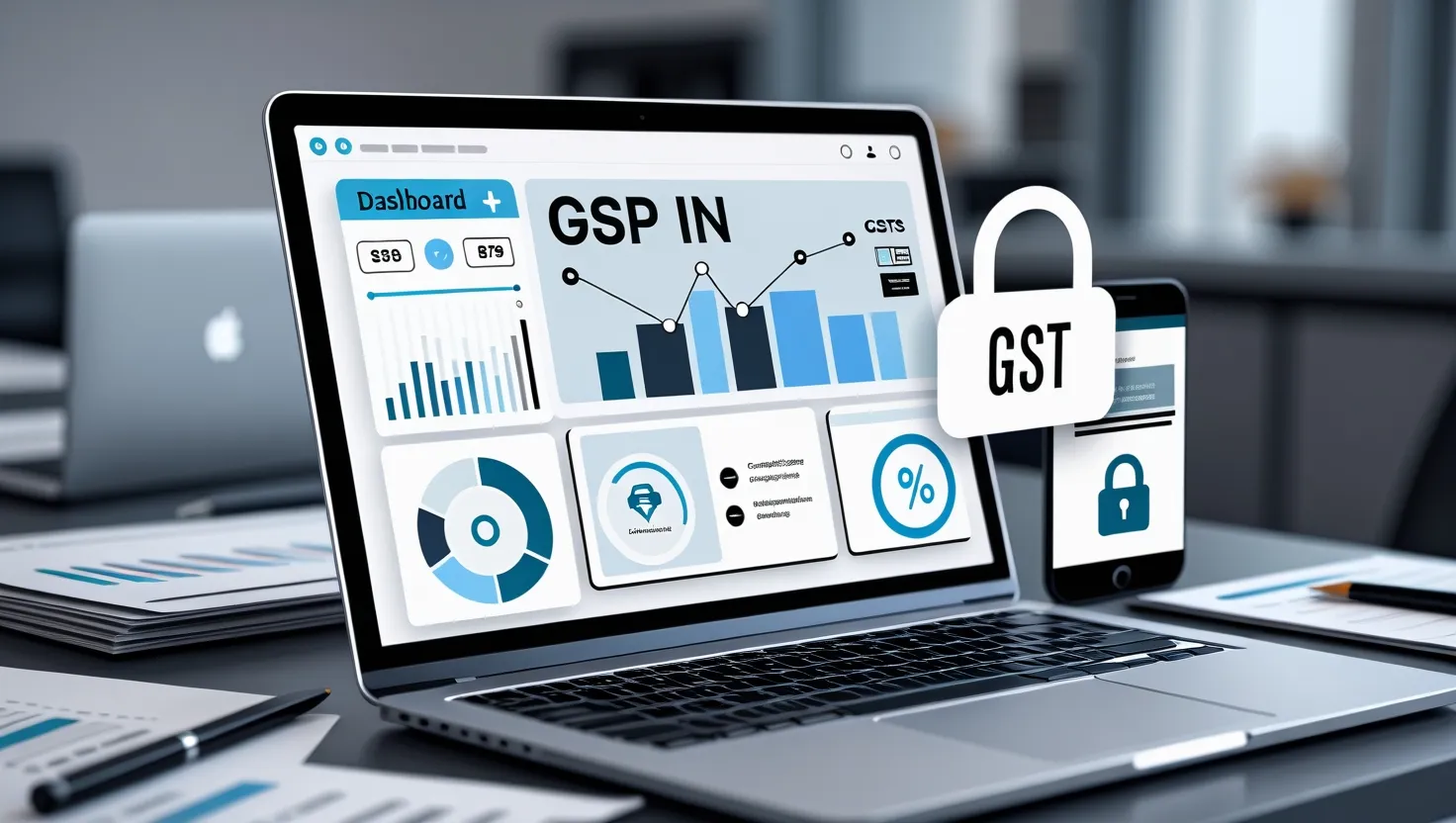
Introduction to GSP and GST #
In India, the Goods and Services Tax (GST) is a tax on goods and services at every stage of sale or purchase. It replaces many old taxes and makes the system simple. But GST rules can be confusing, especially for small businesses.
This is where GST Suvidha Providers (GSPs) come in. They help businesses follow GST rules without hassle. GSPs act as a link between businesses and the GST Network (GSTN), making GST easy to handle.
What Is a GST Suvidha Provider (GSP)? #
A GST Suvidha Provider (GSP) is a company approved by the government to help businesses with GST work. They provide services like:
- Filing GST returns
- Uploading invoices
- Managing tax-related data
Small and medium businesses (SMEs) often struggle with taxes. GSPs help them follow the rules easily and avoid mistakes.
Why Small Businesses Need a GSP #
Handling GST can be complex, especially for small businesses. GSPs make things easier in many ways:
- Saves Time – No need to manually enter tax details. Everything happens automatically.
- Avoid Errors – Mistakes in tax filing can lead to penalties. GSPs reduce such risks.
- Secure Data – They protect your tax data with strong security systems.
- Stay Updated – GST rules change often. GSPs keep businesses informed.
- Easy to Use – Most GSP systems have simple dashboards for easy access.
With GSPs, businesses can focus on their work instead of worrying about tax rules.
Main Features of a GSP #
- Easy Integration with Business Software: GSPs connect with your billing and accounting software through special tools called APIs. This allows automatic data transfer, saving you time.
- High Data Security: Since tax data is sensitive, GSPs use strong encryption to keep it safe. They protect against hacking and data theft.
- User-Friendly Design: Even people with little technical knowledge can use GSP tools. They have simple layouts and easy navigation.
- Real-Time Data Updates: GSP platforms update your GST data in real time. This means you always have the latest details when filing returns.
- Custom Solutions for Different Businesses: Every business has different needs. Many GSPs offer tailored solutions to fit your business type.
Benefits of Using a GSP for Your Business #
Reduces Compliance Burden
GST rules can be confusing, but GSPs make it much simpler. They guide you through the process and reduce stress.
Saves Money
Hiring tax professionals can be expensive. GSPs provide affordable services, saving businesses money.
Ensures Accuracy
Manual entries lead to errors. GSPs use automation to reduce mistakes and ensure correct tax filing.
Saves Time for Business Growth
Since GSPs handle GST tasks, businesses can focus on growth instead of tax work.
Businesses Stay Updated with Assistance.
GST rules change often. GSPs keep track of these changes and ensure businesses follow the latest regulations.
How to Use a GSP in Your Business #
- Choose the Right GSP: Look for good reviews, security features, affordable pricing, and reliable customer support.
- Register with the GSP: Sign up on their platform with your business details.
- Connect GSP with Your Accounting System: Link it with accounting software for smooth operations.
- Upload and Manage Invoices: Digitally upload invoices to save time and avoid mistakes.
- File GST Returns: Use the platform’s guided filing process.
- Check and Reconcile Data: Match tax data regularly for accuracy.
- Stay Updated with GST Changes: Ensure your GSP provides updates on new rules.
Challenges of Using a GSP (and How to Solve Them) #
- Technical Issues: Choose a GSP with good support for quick issue resolution.
- Integration Problems: Test the GSP’s compatibility with your software before finalizing.
- Resistance to New Technology: Offer training to help employees adapt to new tools.
- Frequent GST Changes: Ensure the GSP stays updated with new regulations.
- Over-Reliance on GSPs: Always have a backup plan for tax filings.
Best Practices for Using a GSP Effectively #
- Choose the Right GSP – Find one that fits your business size and needs.
- Train Employees – Ensure staff knows how to use the platform properly.
- Check Data Regularly – Keep invoices and tax records accurate.
- Stay Aware of GST Updates – Keep up with regulations to avoid issues.
- Use Automation – Let the GSP handle repetitive tasks for time savings.
How Vyapar App Helps #
The Vyapar App provides a simple way to manage GST:
- Detailed Reports: Clear data insights.
- Secure Storage: Organized record-keeping.
- Reliable Support: Help when needed.
- Affordable: Budget-friendly for small businesses.
FAQ’s: #
Wat is GST Suvidha Provider (GSP)?
A GSP is a company sanctioned by the government. It helps businesses with GST compliance. This includes filing returns, managing invoices, and handling tax data.
In what ways do GSPs assist small businesses?
GSPs make GST compliance easier. They automate tax filing, reduce errors, secure data, and keep businesses informed about GST rule changes.
Can a GSP integrate with my accounting software?
Yes, most GSPs offer API-based integration with popular accounting software for seamless tax management.
Are GSP services secure?
Yes, GSPs use strong encryption and security measures to protect tax data from unauthorized access or cyber threats.
What is the best way to select a GSP?
Look for factors like ease of use, integration with your accounting system, strong security, affordability, and reliable customer support.
Conclusion #
Using a GST Suvidha Provider (GSP) simplifies tax filing, saves time, reduces errors, and helps businesses grow.
Use Vyapar App to handle billing, stock & payments all in one place.
Make bills, track stock, and handle payments in one place.
